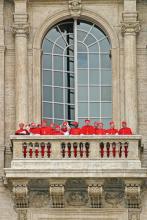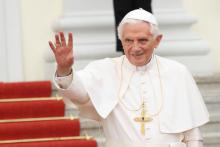electing a pope

“In the church,” Chicago Cardinal Francis George once said, “everything has happened at least once!” That’s no surprise given that the Catholic Church is a nearly 2,000-year-old institution that has adapted to radically different epochs.
But electing a new pope while the former pope is still alive? That’s rare.
So what are some other firsts and lasts, quirks and facts of papal history that you should know? There are plenty, and Religion News Service has compiled a handy guide.

VATICAN CITY — Pope Benedict XVI will soon become the first pope to resign since 1415, short-circuiting many of the initial stages of electing a new pope. But the Vatican says the transition to a new papacy shouldn’t be all that different from normal.
Of course, the traditional rituals associated with confirming the death of a pope and planning his funeral will not be necessary. But the process outlined below, rife with secrecy and tradition, will largely follow centuries-old protocol.